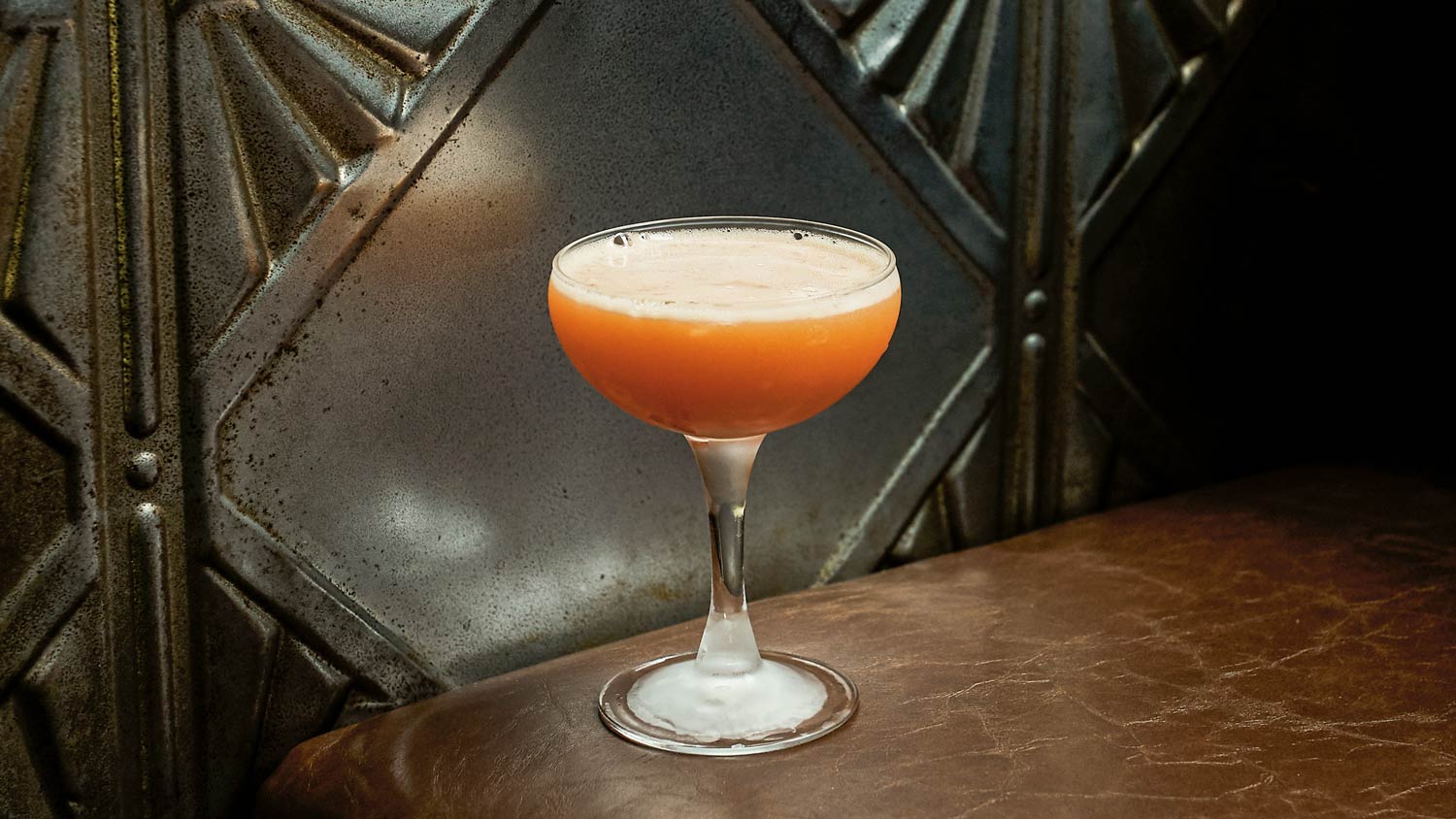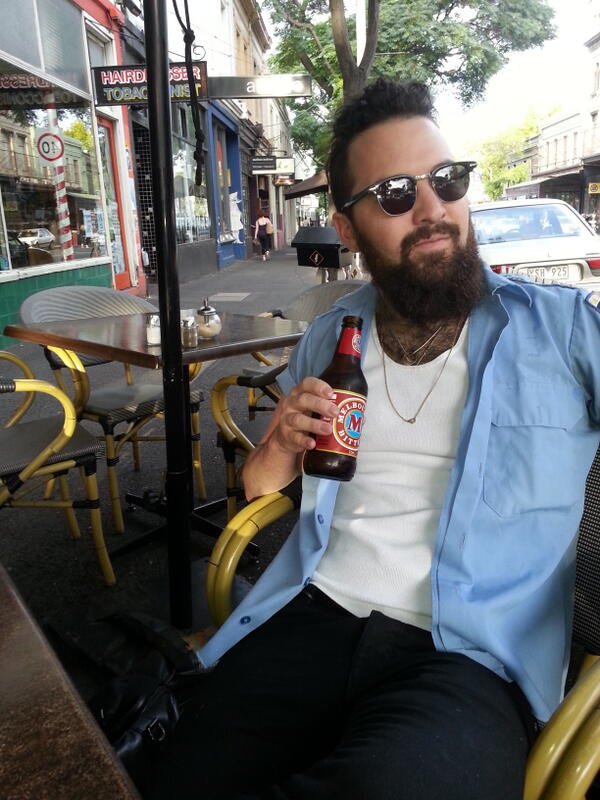Mixologist Sam RossMilk & Honey, Little Branch | New York
Biography Starting out in a high volume café at the age of 15, Sam Ross quickly fell in love – in lust, you could say – with the operations of working a bar. After a short stint washing glasses and lugging cases of beer, Ross started on the espresso machine, and fondly remembers pumping out cafe lattes to a 200-seat café. After finishing school, he helped his mother and sister open their own cocktail bar in Melbourne, Australia, called Ginger in 2001 – and it wasn’t long before cocktails were all he could think about. Ginger was very successful in Australia and was/is considered one of the front-runners for local cocktail culture. It was at Ginger that Ross worked with a number of influential people that he cites as mentors in his career: Sebastian Reaburn, Clinton Liebenberg, Alex and Toby Ross just to name a few. But in 2004, as all Australians tend to do, Ross took his show on the road for the bright lights of New York City. He started working with Sasha Petraske and was part of the opening bar team at both Little Branch and East Side Company Bar. It was through working with Petraske, and during the year he spent at Audrey Saunders’ Pegu Club, that Ross became tuned into the art form of the classic cocktail. Along with working at Milk & Honey for the past 4 years, Ross has installed the bar program at David Meyer's LA restaurants Comme Ca and Sona. He was nominated in 2008 for Tales of the Cocktail’s global “Bartender of the Year” and can honestly say that he just loves what he does for a living. Ross is a bartender’s bartender, and loves everything there is about the craft. But if he had to leave the industry, he’d become a hairdresser. He’s been cutting his own hair for years, and though he’s recently “tamed it down” (his words, not ours), it’s clear that his sense of style is as snazzy as his cocktails.
Interview Heather Sperling: How many covers do you do at Milk & Honey and Little Branch?
Sam Ross: We seat 30 and then turn it thrice on weeknights and weekends. Little Branch is considerably larger. We can seat 55-60 there, and there is a standing section. HS: What is your favorite cocktail to drink? To make?
SR: To drink – can I give you my top 5? Manhattan, Old Fashioned, Negroni, Dark & Stormy, and a Daiquiri, in no particular order. To make: I love the trust that people put in us – they give us full creative control. Maybe they’ll give one adjective or an emotion, description, word, or flavor, and then trust us to come up with a drink inspired by it. We don’t have a menu at Milk & Honey – it’s request-only. HS: How do you make your ice?
SR: We have a crushed ice machine that makes small pellets, and the rest we cut by hand. We go through about 26 pans a night and cut it with a rubber mallet and an ice pick. HS: What are some current trends you’ve seen in the cocktail market?
SR: I’m seeing more people having aperitifs and pre-dinner drinks. Using bitters and having a shelf of them also really excites me. I like mixing bitters and amaros and aperitifs, and changing peoples’ palates to a more bitter side. I’m so addicted to amaro that I have to have a shot with my Cliff Bar every afternoon – my digestive system relies on it. HS: I can see it’s a passion – you have an entire bitters shelf!
SR: I use a lot of bitters and we blend a lot of them here. I have a mixture of a couple of orange bitters – we use it as our house orange bitters. We also make swizzle bitters, which are a combo of Angostura and Peychaud’s. And one of our customers started making bitters – you can’t buy it yet, but we carry it. HS: What goes into creating a new cocktail?
SR: I of course have to preach fresh ingredients. We’re juicing our citrus to order here, and with 35 people and 1 bartender, it ends up being a lot of juicing. Harry Craddock (The Savoy Cocktail Book) was quoted as saying that the best time to drink a drink is quickly, while it’s still smiling at you. The same thing applies to citrus – it’s lively and smiling at you when you press it, then degrades really quickly. HS: What is your favorite mixology resource book and who is the author?
SR: I try and read novels and then cocktail books, to keep my brain active in all areas. Imbibe by Dave Wondrich is absolutely fantastic and sums everything up so beautifully. I also like Charles H. Baker’s Around the World with Jigger, Beaker and Flask, Ted Saucier’s Bottoms Up, and Harry Craddock’s Savoy Cocktail Book. HS: What are you favorite tools?
SR: A good Hawthorne strainer with a really tight coil and a nice gap between the rim and the coil is also really important. People tend to use crap and all sorts of junk gets in the drink because they strain too quickly, or their strainer is crap. HS: Are there any ingredient that you like that you feel are underappreciated or underutilized?
SR: I would say amaros and using Campari in drinks other than a Negroni. I pour a ton of Gosling’s too, which is classically used in Dark & Stormies, but it’s thick, chocolaty and delicious and lends itself well to a lot of citrus drinks. HS: You recently designed cocktail menus for two LA restaurants – what differences did you observe between the NY and LA scene?
SR: Los Angeles didn’t really have a cocktail culture! Must have programs for macbook pro. Or, let’s just say it’s a very young culture. But with everyone being more educated about food and wines, cocktails were obviously going to catch on. I was out there for 6 weeks, and we’ve had a few follow up training sessions [at Comme Ca with Chef David Myers] since. We talk or hang out every 2 weeks and I’m definitely going to go back when they feel it necessary to go back and do a follow-up training session. Consulting is a dirty word – so often people do menus and don’t follow up, but it’s your name, so you have to feel really proud of it. You’ve got to follow up because it’s so easy for a program to go down the shoot – especially if the staff turns over. HS: If you weren’t a mixologist, what would you be doing?
SR: I’d be a hairdresser. I’ve always had self-styled haircuts. I’ve had some wild ones in the past but it’s been like this for a little while. I’m a third generation car salesman as well and I think the personality required for selling cars translates well to the bar. I credit my dad and older brother with that. You have to learn to sell ice to an Eskimo and there’s a part of this job where you tell people what they want – though you need to phrase it carefully. HS: What’s next for you?
SR: I keep my ear to the ground. I love my work and I’m always going to be a bartender. I’ve got some other projects in the cards. I like to train and teach, and I really like opening places rather than going into an existing café, restaurant, bar. Mexico City was being thrown around – that sounds really fun. I don’t think I’m looking at opening my own spot just yet.
back to top
| 




